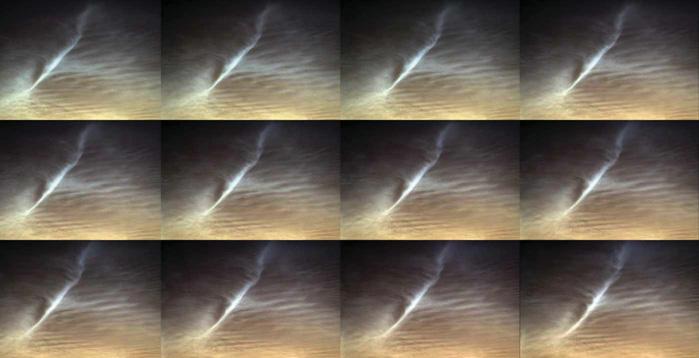
The lack of truly dark skies is an issue for the UK at this time of year. Some compensation is the chance to see noctilucent cloud (NLC) displays, and this month we'll look at how to photograph them to capture their structural movement.
NLCs are high-altitude ice-sheet clouds able to reflect sunlight despite the Sun being below the horizon from ground level. They are typically seen 90-120 minutes after sunset, low above the northwest horizon or a similar time before sunrise, low above the northeast horizon. Extensive displays may last all night, tracking from the northwest, through the north and ending in the northeast.
There are many interesting things about NLC displays, including their brightness, colour and different types of structure. This can all be seen visually, but recording displays with a camera allows you to create timelapse movies that show how NLCs develop over time and how their structures move.
This isn't particularly complicated to do and the results can be quite stunning, revealing aspects of NLCs that you may not have realised were there.
Let's consider the basics of an NLC capture setup, starting with the obvious: a camera that is capable of capturing them. Adjustment to the camera settings should allow a fair bit of control to get the best image possible. You should also bear in mind that NLCs appear against a twilight sky. This is one of the most challenging backgrounds in astronomy, as light levels are constantly changing, meaning you need to stay sharp to avoid under- or overexposure.
A wide lens is ideal for capturing panoramic views of a display, but will also reduce the size of cloud structures and the apparent speed of any movement.
この記事は BBC Sky at Night Magazine の June 2023 版に掲載されています。
7 日間の Magzter GOLD 無料トライアルを開始して、何千もの厳選されたプレミアム ストーリー、9,000 以上の雑誌や新聞にアクセスしてください。
すでに購読者です ? サインイン
この記事は BBC Sky at Night Magazine の June 2023 版に掲載されています。
7 日間の Magzter GOLD 無料トライアルを開始して、何千もの厳選されたプレミアム ストーリー、9,000 以上の雑誌や新聞にアクセスしてください。
すでに購読者です? サインイン

Putting cosmic rays to work
These penetrating interstellar particles have applications from astronomy to archaeology

Set up your first imaging sequence
How to automate and coordinate your gear over multiple nights of imaging

The Universe without gravity
Life with no gravity might sound a fun idea, but as Govert Schilling explains, shutting off this pivotalforce would spell disaster for Earth and beyond

How to blend images taken with different camera setups
Combine data captured at varied focal lengths to create rich, deep images

INSIDE THE SKY AT NIGHT
Back in September 2021, The Sky at Night show spoke to Carly Howett about NASA's then upcoming Lucy mission. As the spacecraft now approaches its main targets - the Trojan asteroids - we check in with her to see how the mission is going

The science of SCI-FI
We love a good sci-fi film, but do they get the science right? Amy Arthur picks six of the big mistakes made in space films

Seeing in a new light
It's National Astronomy Week this month, so take a tip from Mark Westmoquette and let mindful stargazing change your perspective on your life and problems

What to do if you find a meteorite
Ever come across an unusual rock and wondered if it's a meteorite? Mark McIntyre explains how to tell if that stone really is a fragment from outer space

GEAR
Charlotte Daniels rounds up the latest astronomical accessories

Q&A WITH A STELLAR ECLIPSE SPECIALIST
Many stars are gravitationally locked inside multi-star systems, but a rare new triple-star system has set a new record for how cosy these clusters can get